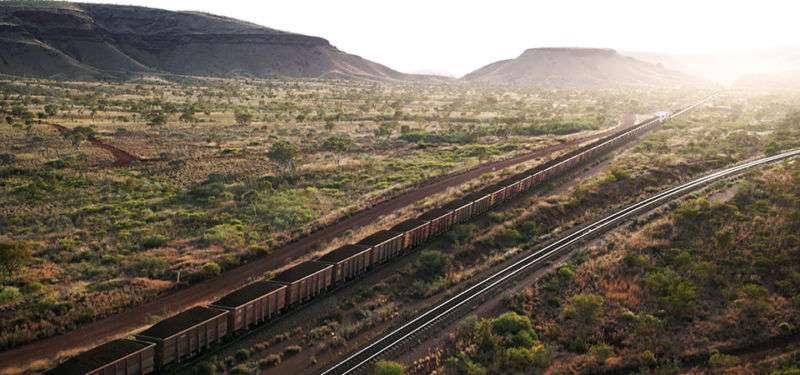
Mining company says first autonomous freight train network is fully operational

On Friday, major mining corporation Rio Tinto announced that its AutoHaul autonomous train system in Western Australia had logged more than 1 million km (620,000 mi) since July 2018, S&P Global Platts reported. Rio Tinto calls its now-fully-operational autonomous train system the biggest robot in the world.
The train system serves 14 mines that deliver to four port terminals. Two mines that are closest to a port terminal will retain human engineers because they are very short lines, according to Perth Now.
The train system took ten years to build and cost Rio Tinto AUD $1.3 billion (USD $916 million) to implement. The trains are remotely monitored by a crew located 1,500 km (932 mi) away in Perth.
According to the mining company, the autonomous trains make sure the rails are clear ahead and monitor internal systems as well, checking for faulty wheels or couplers and bringing the train to a stop if there’s a problem.
The autonomous train system will allow Rio Tinto to cut down on the number of stops that the 2.4 km (1.5 mi) long, iron ore-hauling trains have to make to change drivers. Prior to the operation of the autonomous train system, the mining company shuttled train drivers 1.5 million km per year (932,000 mi) due to shift changes. “The average return distance of these trains is about 800 km with the average journey cycle, including loading and dumping, taking about 40 hours,” S&P Global Platts wrote.
Additionally, the trains will be able to run six percent faster “by removing acceleration and braking variations caused by human drivers,” per Perth Now. Rio Tinto expects that its AutoHaul system will allow it to increase the region’s iron ore production capacity by 20 million tons.
Freight has been a prominent target of autonomous vehicle research, although in the US most of the hype surrounds freight trucks, which could be run in platoon formation to cut down on highway traffic.




